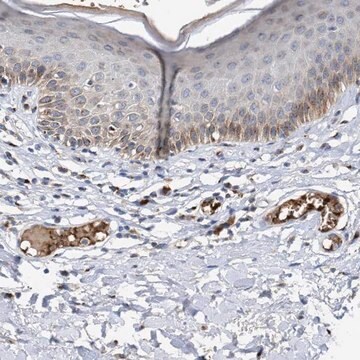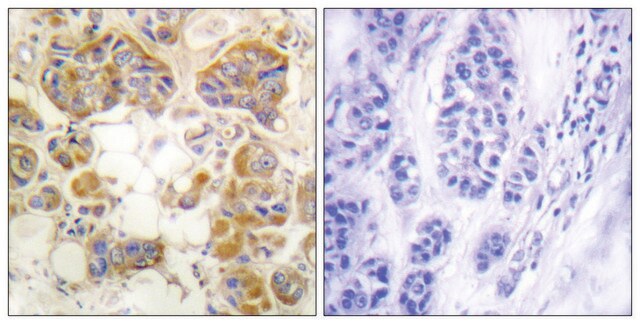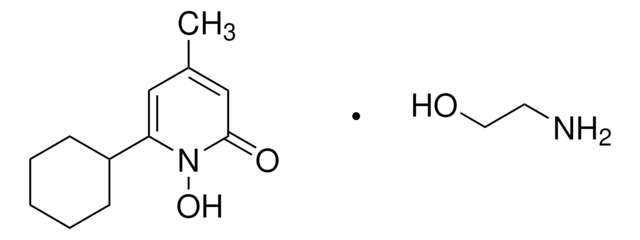MABN712
Anti-CCL2 Antibody, clone 2D8
clone 2D8, from mouse
Sinonimo/i:
C-C motif chemokine 2, Monocyte chemoattractant protein 1, Monocyte chemotactic and activating factor, Monocyte chemotactic protein 1, Monocyte secretory protein JE, Small-inducible cytokine A2
About This Item
Prodotti consigliati
Origine biologica
mouse
Livello qualitativo
Forma dell’anticorpo
purified antibody
Tipo di anticorpo
primary antibodies
Clone
2D8, monoclonal
Reattività contro le specie
monkey, mouse, rat, human
tecniche
flow cytometry: suitable
immunofluorescence: suitable
immunohistochemistry: suitable
western blot: suitable
Isotipo
IgG1
N° accesso UniProt
Condizioni di spedizione
wet ice
modifica post-traduzionali bersaglio
unmodified
Informazioni sul gene
human ... CCL2(6347)
Descrizione generale
Immunogeno
Applicazioni
Immunohistochemistry Analysis: A 1:200-1,000 dilution from a representative lot detected CCL2 in human liver cancer tissue.
Flow Cytometry Analysis: A 1:200-400 dilution from a representative lot detected CCL2 in A549 cells.
Optimal working dilutions must be determined by end user.
Neuroscience
Signaling Neuroscience
Qualità
Western Blotting Analysis: A 1:500-2,000 dilution of this antibody detected CCL2 in A549, HeLa, Raw264.7, L1210, C6 and COS-7 cell lysates
Descrizione del bersaglio
Stato fisico
Stoccaggio e stabilità
Risultati analitici
A549, HeLa, Raw264.7, L1210, C6 and COS-7 cell lysates
Esclusione di responsabilità
Non trovi il prodotto giusto?
Prova il nostro Motore di ricerca dei prodotti.
Codice della classe di stoccaggio
12 - Non Combustible Liquids
Classe di pericolosità dell'acqua (WGK)
WGK 2
Punto d’infiammabilità (°F)
Not applicable
Punto d’infiammabilità (°C)
Not applicable
Certificati d'analisi (COA)
Cerca il Certificati d'analisi (COA) digitando il numero di lotto/batch corrispondente. I numeri di lotto o di batch sono stampati sull'etichetta dei prodotti dopo la parola ‘Lotto’ o ‘Batch’.
Possiedi già questo prodotto?
I documenti relativi ai prodotti acquistati recentemente sono disponibili nell’Archivio dei documenti.
Il team dei nostri ricercatori vanta grande esperienza in tutte le aree della ricerca quali Life Science, scienza dei materiali, sintesi chimica, cromatografia, discipline analitiche, ecc..
Contatta l'Assistenza Tecnica.






